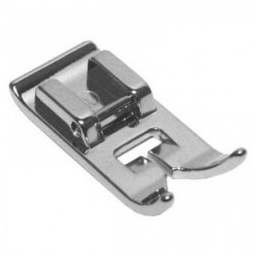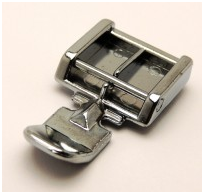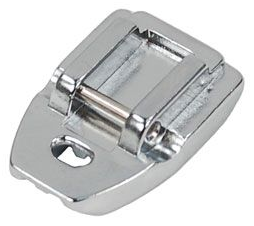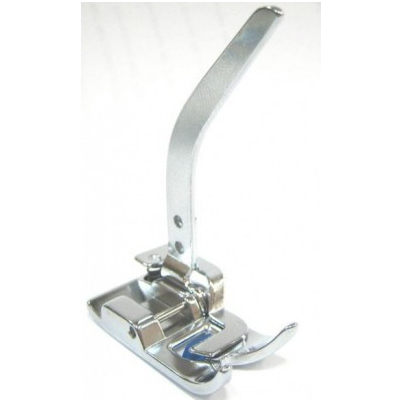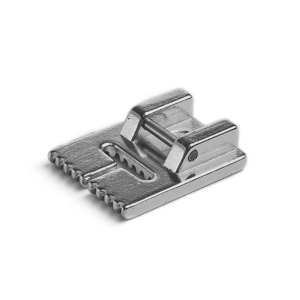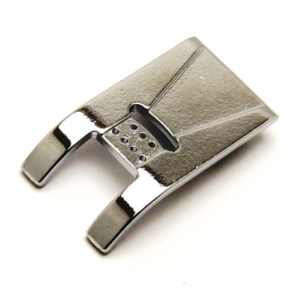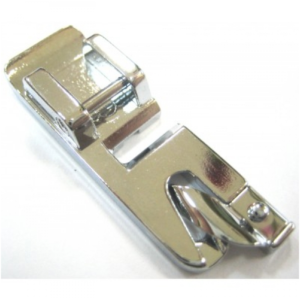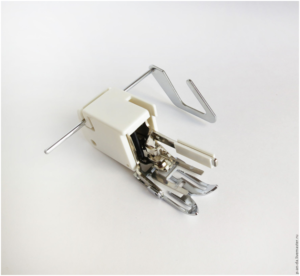Each person chooses his own way of applying modern technology. Most people assign to household appliances purely domestic tasks. The use of a sewing machine is knocked out of this series. These devices can act as a utilitarian high-performance tool, perform the task with a minimum of interference in the work and serve as a fixture for creativity. Types of legs for sewing machines and their purpose are information that can help home craftsmen and craftswomen rediscover their familiar working tool.
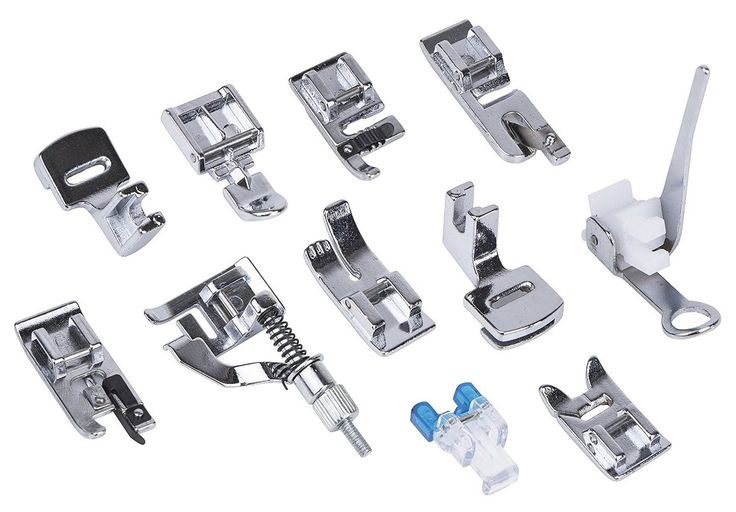
What will be discussed
We will not consider the professional and semi-professional class of machines. They are usually equipped with many additional devices for performing operations of high complexity. For example, often there is an upper conveyor for feeding several layers of fabric, there are separate modes for processing loops, performing other work in semi-automatic or automatic mode.
Moreover, we will not touch on industrial devices. The description will relate to the foot for simple household sewing machines. Kits of such functional fixtures can be easily purchased. For example, in the LADY SEW series there are dozens of sets, each of which has several paws designed for individual work.
By choosing a specific set, you can ideally satisfy your needs for creativity or functionality. At the same time, it is not difficult to understand which foot in the sewing machine is why, there are detailed instructions for use.
The foot is mounted on the machine quite simply. Most modern devices are equipped with a standardized holder. The complete foot is removed, a new one is installed, and if necessary, its position is adjusted. At this stage, the preparation of the machine for work ends, and you can easily sew with the necessary operations.
What types of paws are
Describing all classes of sewing feet is very difficult. There are really a lot of them. Even within the same category there is a large spread. For example, special paws for quitting can be open and closed, made of different materials, have a different configuration from each other. Therefore, we touch on devices, the use of which will be useful for most modern housewives.
- Zigzag. Sufficiently versatile and convenient fixture. With it, you can make a straight line and actually a zigzag. Almost all main types of fabrics are processed, so most homemakers often use such a nozzle instead of the standard one.

- For stitching zippers. The zipper foot offers two modes of use at once. With it, you can easily sew a fastener into clothes without messing around with a turn below, the nozzle presses the fabric and makes it easy to track the stitch. To work on both sides of the device, two recesses for the movement of the needle are provided. With this foot, you can also sew on the edging, while the wide one is processed like a zipper, and the narrow one is attached close to the edge.

There are many kinds of paws for lightning. They differ in both size and configuration of the front area of the tissue intake.
Nozzle for secret zippers solves another problem. When sewing such an element of clothing, a thickening on the fabric inevitably forms - it becomes difficult to stretch it. Using the presser foot, in which a recess is provided for the passage of the material, it’s easy to sew, no effort is required.

- For knitwear. Knitwear is very delicate, it needs to be sewn carefully. The most common problem is picking up a thread or fabric that falls directly into the needle grip area. An additional stop is provided for the knit foot, which cuts off the needle movement area.Good models have an additional rubber (or silicone) overlay installed on this part, which handles the fabric very carefully.

- For cords and pinches. A series of paws designed to create tucks has special protrusions on the sole. With their help, two tasks are solved at once:
- the fabric can be easily assembled, depending on the configuration of the nozzle, pinches with different geometries are obtained;
- Forming straight lines with perfectly parallel arrangement is very simple.
Using this device, you can also sew cords for decorating clothes.

This can be done with a foot with recesses in the sole, as well as with a special model, where holes are used to feed the cords.

Such a product works better and more convenient, but is used only for one operation. - For hem. The processing of thin and light fabrics, such as silk, always has its own characteristics. One of them is the need to make a small bend so as not to burden the product and not change the geometry of the elements of clothing. To solve this problem, a foot for a small hem is intended.

Such a nozzle will capture a minimum amount of tissue, gently bend it and feed into the area of the needle. In this case, the needlewoman requires a minimum of effort and attention. - With top conveyor. As the name implies, the purpose of the foot is to feed the fabric from above, in addition to the standard mechanism of the machine. In fact, the working method is somewhat different, but the result is acceptable: using such a nozzle, it is easy to flash several layers of fabric without shifting them relative to each other.

For this class of paws, products are typical that additionally allow you to make stitches with an even distance between them. For this, the nozzle is equipped with a stop, which is horizontally adjustable and acts as a kind of ruler. - For a slanting inlay. Sewing an oblique trim is difficult. You need to evenly position the edges on two sides of the fabric. In conditions where the lower part is not visible, only an experienced seamstress will perform the quality work. A special foot allows you to do this operation without difficulty. It is enough to insert the tape, place the fabric in the foot and press the start pedal of the machine. In the process, you only need to carefully stretch the tape through the foot.

There are enough technological products that serve to perform truly complex operations. Assembly fixtures, for example.

They allow you to simultaneously assemble the assembly and sew it to the fabric. Inexpensive models may require retrofitting the machine with a low-landing adapter and will certainly make you get used to a peculiar sewing mode. Complex and expensive mechanisms for creating assemblies allow the needlewoman to exert a minimum of effort to create truly high-quality products.
Conclusion
As mentioned above, it is very difficult to tell in full which paws for the sewing machine are. Among them there are simple ones made of transparent material that improve complex work, for example, embroidery, allowing you to track the overlay of the picture. There are large-scale devices for creating circular seams. There are simple nozzles for sewing buttons, sewing at a certain distance from the edge, with knives for cutting. The use of each of them is convenient and efficient. From the housewife, only one thing is required - to buy a kit with the necessary devices, before that thinking and accurately assessing exactly what kind of functionality she wants to get.
